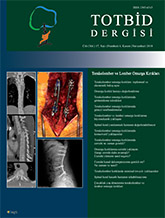
Biomechanics, the application of mechanical principles to living organisms, helps us to understand how all the bony and soft spinal components contribute individually and together to ensure spinal stability, and how traumas, tumours and degenerative disorders exert destabilizing effects. Spine stability is the basic requirement to protect nervous structures and prevent the early mechanical deterioration of spinal components. The literature reports a number of biomechanical and clinical definitions of spinal stability, but a consensus definition is lacking. Bones, disks and ligaments contribute by playing a structural role and by acting as transducers through their mechanoreceptors. Mechanoreceptors send proprioceptive impulses to the central nervous system which coordinates muscle tone, movement and reflexes. Therefore, damage to any spinal structure gives rise to some degree of instability. Thoracic and lumbar fractures often result in an abrupt change in the patient`s quality of life, and with persistent pain, can result in functional loss leading to chronic complications over time. Spinal traumas affect a complex structure composed of soft and bony components having different traumatic susceptibility and healing potential. This complexity hampers the classification of traumas, the assessment of instability, and treatment outcomes. However, unlike degenerative instability, the relationship between imaging findings and clinical symptoms tends to be more direct. The definition of instability in the spinal fractures is the topic of ongoing research. Although fractures are traditionally divided into stable and unstable, all spinal components contribute to stability. Damage to any spinal structure gives rise to some degree of instability which is not an `all or nothing` phenomenon.